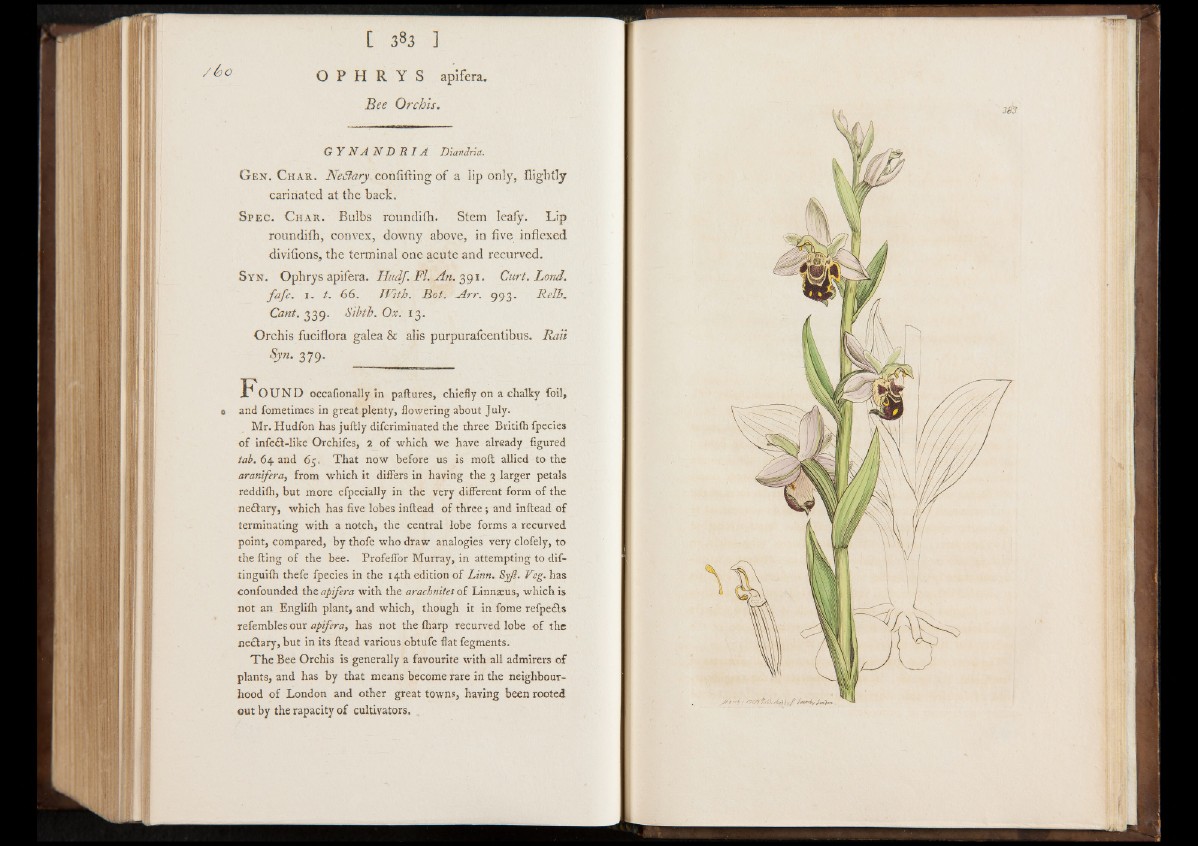
/ 6)0
0
O P H R Y S apifera.
Bee Orchis.
G Y NA N D R I A Diandria.
G en. Char. Nectary confiding of a lip only, fligbtly
carinated at the back.
Spec. C har. Bulbs rounditb. Stem leafy. Lip
roundifh, convex, downy above, in five indexed
divifions, the terminal one acute and recurved.
Syn. Opbrys apifera. Hudf. FI. An. 391. Curt. Lond.
fafc. x. t. 66. IFith. Bot. Arr. 993. Relh.
Cant. 339. Sibth. Ox. 13.
Orchis fuciflora galea & alis purpurafcentibus. Ran
SJn- 379* _________________________
JR'OU ND occafionally in paftures, chiefly on a chalky foil,
and fometimes in great plenty, flowering about July.
Mr. Hudfon has juftly difcriminated the three Britifh fpecies
o f infe£t-like Orchifes, 2 of which we have already figured
tab. 64 and 6c. That now before us is moft allied to the
aranifera, from which it differs in having the 3 larger petals
reddifh, but more efpecially in the very different form of the
neftary, which has five lobes inftead of three; and inftead of
terminating with a notch, the central lobe forms a recurved
point, compared, by thofe who draw analogies very clofely, to
the fling of the bee. Profeffor Murray, in attempting to dif-
tinguifh thefe fpecies in the 14th edition of Linn. Sjf. Veg. has
confounded the apifera with the arachnites of Linnaeus, which is
not an Englifh plant, and which, though it in fome refpe£ls
refembles our apifera, has not the {harp recurved lobe o f the
nefilary, but in its Head various obtufe flat fegments.
The Bee Orchis is generally a favourite with all admirers of
plants, and has by that means become rare in the neighbourhood
of London and other great towns, having been rooted
out by the rapacity of cultivators. .